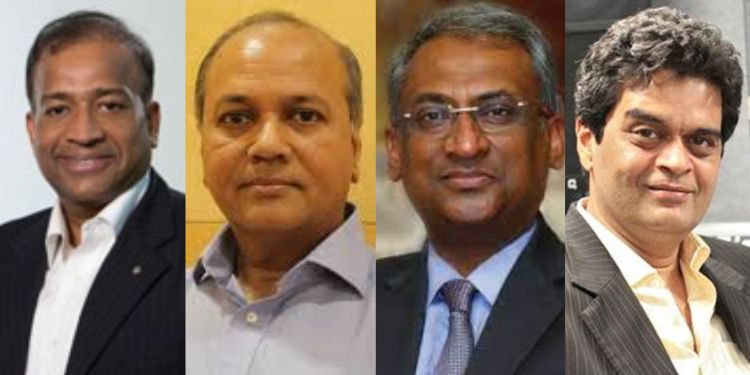The opposition alliance ‘INDIA’, which stands for Indian National Developmental Inclusive Alliance, which comprises 26 opposition parties and is in power in 11 states on Thursday released a list of 14 TV anchors whose shows the alliance will not participate in.
If they stick to the ban, what will be the impact on the shows in question? Especially with elections around the corner, a period when news channels sees a surge ?
We asked: Will coverage of only one side of the spectrum lead to decline in viewership? Or, was the slant always there leading to a loyal viewer base – thereby ensuring no impact on viewership?
‘May not significantly impact viewership’
“The INDIA Alliance boycott of 14 anchors may not significantly impact viewership of these channels,” opines Lloyd Mathias, Business strategist & Independent Director.
He explains, “It is because their loyal viewer base will stick to watching their favourite anchors. Also, news as a genre has a small set of committed advertisers who will continue to use the genre. Also, spends on the news genre may rise significantly given the upcoming Lok Sabha polls and a few states going to the polls earlier.”
‘There won’t be any impact’
Ramesh Narayan, ad veteran and Founder of Canco Advertising believes that there won’t be any impact.
“These are days of committed journalists. And committed news houses. And committed audiences. By and large, I could tell your political leanings and your ideology by the news channels you watch. Unfortunately, we have all made up our minds already and only want to hear validation for that. From the macro perspective I am pained by the move of the opposition alliance. To me it smacks of insecurity. Yet, on a lighter vein, their spokespersons could take a break, regroup and then hopefully come back refreshed. And of course, if you miss the opposition spokesperson you can always tune in to India Today where Rajdeep doubles as an anchor and an opposition spokesperson. So, I don’t think there will be a significant impact,“ said Narayan.
‘If they don’t see someone pummelled, the audiences are likely not to enjoy their news’
According to, N Chandramouli, CEO at consumer analytics and brand insights agency TRA Research, there will be an impact – as they are likely not to enjoy the news as much.
“The loyal viewers of the boycotted anchors are those who can be likened to sports viewers who enjoy blood-sport, especially when the anchor accentuates the conflict. If they don’t see someone pummelled, the audiences are likely not to enjoy their news, which they saw for perverse entertainment and rarely for the news content,” notes Chandramouli.
‘People seek out news providers that tally with their own line of thinking’
Paritosh Joshi, Principal – Provocateur Advisory, opines that he doesn’t see a sharp decline in viewership due to the boycott issue.
News channel audiences are focused with each viewer watching two to four channels, he reasons. “There are only a handful of channels. It is basically mastered acceptance that brand gains with consumers. In that sense, newspapers and news channels are similar,” Joshi said.
He elaborated, ”I don’t buy a newspaper knowing what story it will carry today. I buy it because of the trust I have in the quality of journalism that the newspaper exhibits. People tend to seek out news providers that tally with their own line of thinking. The best example of loyalty in this regard which can be copied in India is the American news market where there is no hesitation if you want to say political left or right, it would be easy to say MSNBC on the left and One America News Network on the extreme right, with Fox News close to it. We don’t have that much diversity, at least not in the Hindi news market. But, if you look at language channels in Marathi, Gujarati, Telugu, Kannada etc. especially as you go into peninsular South India, alignments with political parties are direct and they are open about it.”
Joshi notes that the issue is in the Hindi market and not elsewhere.
“Let us understand that Hindi may account for 40 pc of India’s news audience and the rest of the news audience is elsewhere. Even if it’s in Hindi there are Hindi regional channels in Rajasthan, Madhya Pradesh, UP, Uttarakhand, for example News18 Bihar-Jharkhand. The news gets splintered and fragments to some viewing of the local news stations. The impact as such will be really on the pan-state Hindi channels. They call themselves national channels, but that’s not right, they don’t have much of an audience South of Maharashtra. There are pockets of audience in Hyderabad, Bengaluru, or Visakhapatnam or in Chennai, but they don’t have a pan peninsular India audience. Impact will be on the 40 to 45 pc of audience which lies in North India and even there, there is considerable number of alignments behind the professed politics of these channels. I don’t see a major sharp decline in viewership, but then again time will tell,” he added.
“There will be other issues which might happen. There are talks that this may even lead to the denial of government advertising revenue to opposition-ruled states. That will have a different kind of effect. Otherwise, the effect in the near term will be marginal,” he observed.
Feedback: [email protected]

















